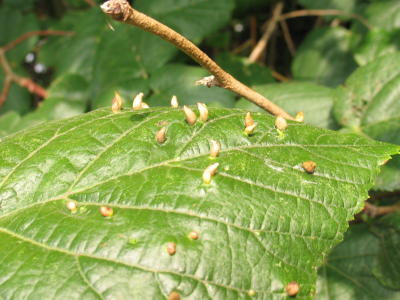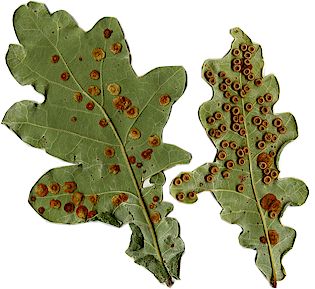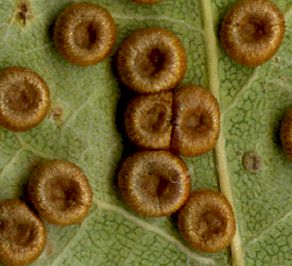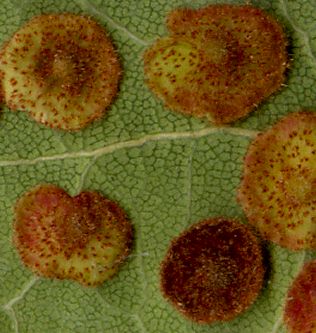Galls can be caused by fungus, bacteria, mite, fly, midge, moth, wasp or beetle larvae. The plant species can have several different gall species on different parts of the plant - leaves, twigs, buds, roots, flowers and catkins, often each caused by a different agent and occasionally a gall can appear on another gall!

" Gall "
Abnormal outgrowth on a plant that develops as a result of attack by insects
or, less commonly, by bacteria, fungi, mites, or nematodes. The attack
causes an increase in the number of cells or an enlargement of existing
cells in the plant. Gall-forming insects generally pass the early stages
of their life inside the gall.
Gall wasps are responsible for the conspicuous bud galls forming on oak trees, 2.5–4 cm/1–1.5 in across, known as ‘oak apples’. The organisms that cause galls are host-specific. Thus, for example, gall wasps tend to parasitize oaks, and sawflies willows.
The ensuing "Gall" also becomes home for an elaborate ecosysyem in itself with other wasps often involved capitalising on the "fruits of the Gall" known as inquilants.These other species of wasp larvae will make use of the gall. There are the species that do not form their own galls but just utilize those already formed by others, these are the inquilines
Galls are relatively common however they are not
often noticed and because of this only a few have common names, manyspecies
are known only by their scientific name.
The Common and Silk Button Spangle Gall are found on our common Oak (Quercus robur). They are produced by a tiny Cynipid wasp which goes through a complicated life cycle using two stages of development.
Things begin in June when a generation of both Male & Female wasps hatch from Currant Galls. The adults mate and the female lays fertilized eggs on the underside of the Oak leaves. These cause the creation of the Common Spangle Gall in which the grub matures. The Spangle Galls fall from the leaves in September and the wasp continues to grow within the leaf litter. In April they hatch to produce a female-only generation. These start the cycle again by laying eggs on Oak flowers which develop into the Currant Galls.
Other species of Cynipid wasps produce different kinds of gall and have different life cycles. One example is the Knopper Gall which uses two different species of Oak (Quercus robur & Quercus cerris) and two years to complete its cycle.
English Oaks ivcan have > 56 species living on them, including the marble gall ( These are caused by a wasp called Andricus kollari, while the illustrations below shows three different spangle galls on the underside of oak leaves.



